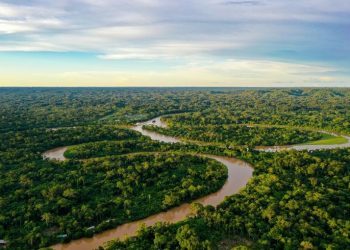Jakarta, Indonesia Sentinel — One of the most groundbreaking discoveries in paleontology has emerged from the Siberian permafrost: a 35,000-year-old mummified saber-toothed kitten, remarkably preserved with its physical features intact. This finding not only offers a detailed glimpse into a long-extinct species but also deepens our understanding of how animals adapted and evolved during the Late Pleistocene age.
The kitten, identified as a member of the species Homotherium latidens, still retains its whiskers, claws, and well-preserved body parts, including its head and forelimbs. The frozen permafrost—soil that remains at subzero temperatures—played a crucial role in preventing decomposition, ensuring the preservation of this extraordinary specimen.
Insights into a Prehistoric Predator
Dating back to the Late Pleistocene (126,000–11,700 years ago), the kitten’s age was estimated using radiocarbon dating. Analysis suggests it was only three weeks old at the time of its death, as indicated by the development of its milk teeth.
Published in Scientific Reports, recent research highlights the saber-toothed kitten anatomical features and positions Homotherium latidens as a formidable apex predator of its era.
Long, Sharp Canines: Although the kitten’s fangs were underdeveloped, its jaw structure and tooth growth patterns indicate the potential for large, sharp canines. These teeth underscore its role as a dominant predator in its ecosystem.
Thick, Dense Fur: For the first time, direct evidence of Homotherium’s fur has been documented. The kitten’s thick, long coat, combined with a dense underlayer, highlights its adaptation to Siberia’s harsh, icy climate.
Short Snout: Compared to modern big cats like lions or tigers, Homotherium latidens had a shorter snout. This likely supported a hunting strategy reliant on powerful bites rather than speed to overpower prey.
Strong, Proportionate Limbs: The saber-toothed kitten legs were larger and sturdier relative to modern lion cubs, providing stability on slippery terrain such as snow or ice. These robust limbs were essential for ambushing and subduing large prey.
Japanese Fans Post-Match Cleanup at GBK Stadium, a Tradition Worth Praise and Admiration
All these traits portray the saber-toothed kitten as a predator finely tuned to survive and thrive in Siberia’s cold and unforgiving Pleistocene environment.
Implications of the Discovery
This find expands the known geographical range of Homotherium latidens. Previously, fossils of the species were primarily discovered in Europe and Central Asia. The Siberian find demonstrates the predator’s remarkable adaptability to a broader range of climates, including northern frozen regions.
Moreover, the kitten offers a rare window into the Late Pleistocene ecosystem in Siberia. As an apex predator, Homotherium latidens likely played a critical role in a complex food web, showcasing dynamic interactions between predators and prey.
While this discovery has already revealed fascinating insights, further research is underway. Scientists aim to study the kitten’s anatomy and ecology in greater depth, with findings expected in upcoming studies. Additionally, exploring the surrounding permafrost environment may provide more clues about ecosystem structures and the factors shaping prehistoric life.
The preserved saber-toothed kitten serves as a testament to the wonders hidden beneath Siberia’s icy surface, offering an extraordinary connection to the distant past.
(Raidi/Agung)

























